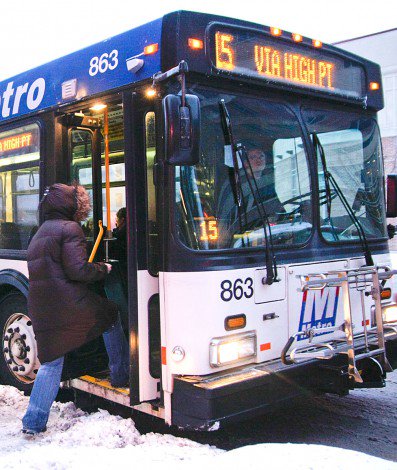Route 80-frequenters know all too well that one of Madison Metro’s most common complaints, according to their 2016 annual report, is overcrowding. Given Madison’s population is projected to rapidly increase in the future, public transportation and the issue of crowding has taken top priority.
Consequently, Madison Metro began working with the Madison Area Transportation Planning Board to develop a type of Bus Rapid Transit system. Though the city published a 104-page study proposing this solution in 2013, we haven’t heard much since then.
It may seem like transportation has been put on the back burner by the Madison city government. Nevertheless, there are definitely some pros and cons to consider with this seemingly revolutionary solution to the city’s transportation woes.
Many large cities across the globe successfully utilize this highly-innovative transportation system, such as Jakarta, Indonesia, home of Transjakarta, the longest BRT in the world, and Curitiba, Brazil, with its Rede Integrada de Transporte, the birthplace of BRT. The Madison Area Transportation Planning Board pitched BRT as “a frequent, high-capacity, limited-stop transit service which offers faster service and improved urban mobility.” Though it looks different from city to city, it helps to think of this system as a hybrid between the streamlined system of a light-rail transit and the convenience of a bus that does not require rails or underground tunnels.
Typical BRT vehicles are 60-feet long, low-floored, bend at the center, and can either operate in their own separate, dedicated lanes or on the existing street network. BRTs can make buses faster by coordinating the traffic lights to prioritize the bus routes, improving pedestrian access to these stations, and implementing off-board fare collection.
The study concluded if the city were to implement this new system, travel times could be significantly reduced. For example, the 37-minute commute from Capitol Square to East Towne Mall could drop to 24 minutes. More people may choose to ride the bus instead of driving cars, potentially clearing up short-distance driver traffic. The system would improve the connection between low-income neighborhoods and centers of employment and activity, and of course, the increased carrying capacity of the new buses would reduce overcrowding. Another unique benefit of this state-of-the-art transit system is that since there is no need to wait for the entire infrastructure to be completed, its service can be gradually phased in.
Still, there are two weighty downsides to this proposed system that may explain why the city has seemingly halted any progress on the matter. For one, while the costs are better than constructing a railway, it is an expense the city and state are unwilling and potentially unable to cough up. The study estimates the initial costs would amount to $138-192 million, with $9.8 million in operating costs. There is little chance any of that funding will come from the federal government. Earlier this year, Madison Metro was denied a $20 million federal grant for building a much-needed storage facility to alleviate the current facility on East Washington Avenue, which is housing more buses than what it was built for.
Another option for funding that has been unsuccessfully proposed in the state legislature is the formation of a regional transit authority, a new layer of governance over a region’s transportation systems that could cover multiple counties and would be able to impose taxes to fund its operations.
The second foreseeable problem is the potential to cut corners and slip back into being the same — but now more expensive — bus system. This happens so often with other BRT’s that there is a name for it: “bus rapid transit creep.” Boston’s Silver Line is one such example, whose afflictions, among others BRTs’, are outlined in a survey of BRT in the US from the Institute for Transportation and Development Policy. In Boston, the bus times were often delayed because of the city’s inability to keep restricted lanes clear of parked cars, as the system relied on using existing curb-aligned bus lanes.
An important factor in deciding whether to move forward with this new transit system, and one that distinguishes Madison from other cities using BRT, is Madison’s size. Jakarta’s population is 36 times that of Madison. It needs a public transportation system that can adequately service such a densely populated region. While Madisonians continue to wait for more developments on this new transit system, they can look to more accessible solutions to the problem of overcrowding — namely, they could ride bikes or carpool. Madison has designated bike lanes in the middle of most of the city’s major roads, including a portion of the Beltline Highway. Just a few people every day choosing to bike to work or class could, in theory, alleviate the issue of overcrowding.
-------------------------------------------------------------------------------------------------------------------------
Source: https://badgerherald.com/opinion/2018/11/06/though-bus-rapid-transit-system-may-improve-overcrowding-more-cost-effective-solutions-are-available/
In accordance with Title 17 U.S.C. Section 107, this material is distributed without profit to those who have expressed a prior interest in receiving the included information for research or educational purposes.
| 